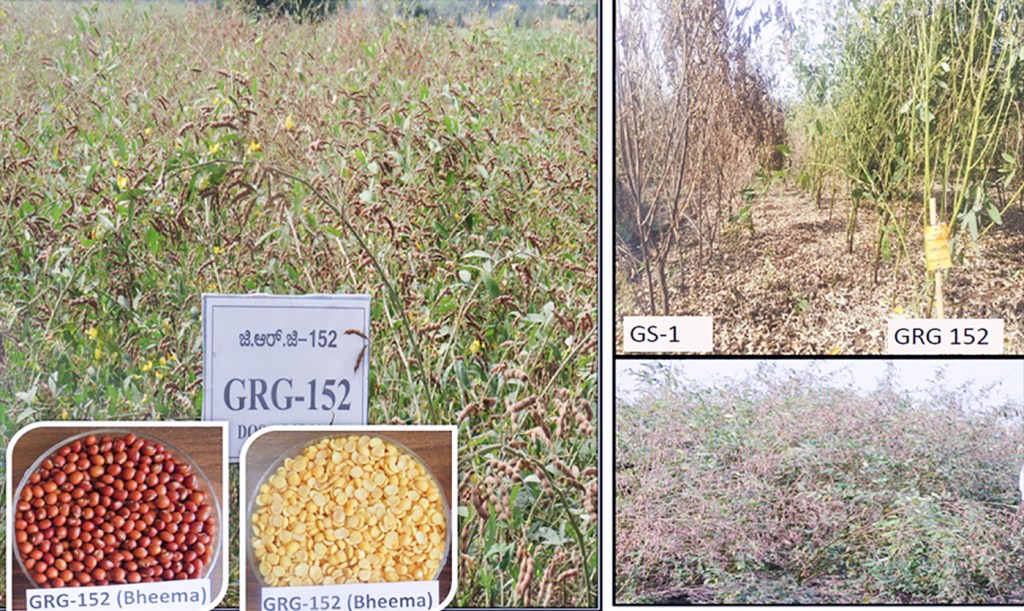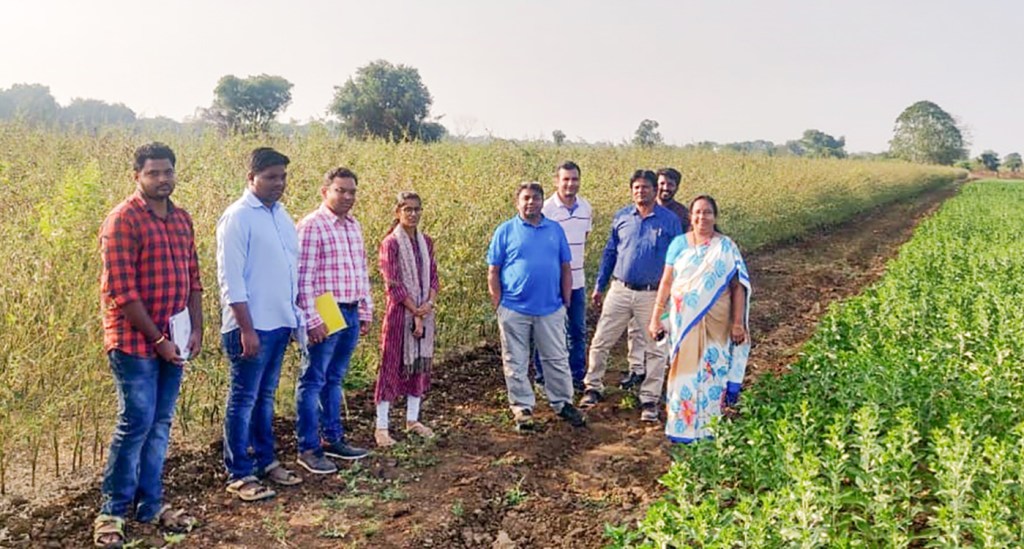NEW HIGH-YIELDING PIGEONPEA VARIETY SET FOR RELEASE IN INDIA, MORE TO COME
TDRG 59, a high-yielding variety of pigeonpea resistant to Fusarium wilt and sterility mosaic diseases, has been identified for cultivation in India’s south zone. The new variety produced 23.13% higher yield than the national check in three-year trials conducted by the All India Coordinated Research Project (AICRP) on pigeonpea.
Developed by ICRISAT and Professor Jayashankar Telangana State Agricultural University’s (PJTSAU) Agricultural Research Station in Tandur, TDRG 59 was identified by AICRP in June 2021. Also known as ICPL 99050, the variety produced an average yield of 1719 kg/ha or 23.13% higher than ICPL 8863 (national check) and 26.21% higher than CO 8 (local check) in multi-location trials. The fungal disease Fusarium wilt and the viral disease caused by the sterility mosaic virus are two diseases that significantly lower pigeonpea yields. ICRISAT developed the line which was taken up for testing and evaluation by the research station.
“After nine years in the making, TDRG 59 is ready for release. It is a medium-duration variety and matures within 170 days. The variety will become available to farmers after the Central Varietal Release Committee (CVRC) notifies it,” said Dr Rachit Saxena, Senior Scientist, Applied Genomics, ICRISAT. The south zone for pigeonpea cultivation covers the Indian states of Andhra Pradesh, Telangana, Karnataka and Tamil Nadu.
Some more pigeonpea Bheema, a pigeonpea variety that resulted from ICRISAT’s collaboration with University of Agricultural Sciences Raichur’s Zonal Agricultural Research Station (ZARS) in Kalaburagi (Karnataka state) was among the recent varieties notified by the CVRC. Bheema was identified for release in India’s central zone covering the states of Maharashtra, Madhya Pradesh, Gujarat and Chhattisgarh. Bheema matures in 165 days and has high resistance to Fusarium wilt and sterility mosaic virus.ICRISAT and ZARS-Kalaburagi are also using genomics to improve pigeonpea in a first-of-its-kind effort for this crop. Three advanced breeding lines (NAM88, NAM92 and NAM151) that were developed by ICRISAT through a technique called Nested Association Mapping (NAM) were evaluated for two years by ZARS at Kalaburagi. Subsequently, they were picked up for AICRP’s Initial Varietal Trails (IVT) in 2021.
“These lines were found to have high yield potential, good seed size and adaptation. The three lines have the potential to fulfill the need for good cultivars in early (NAM88) and mid-early (NAM92 and NAM151) maturity groups,” said Dr Rajeev Varshney, Research Program Director for Accelerated Crop Improvement, ICRISAT.
Source – ICRISAT

